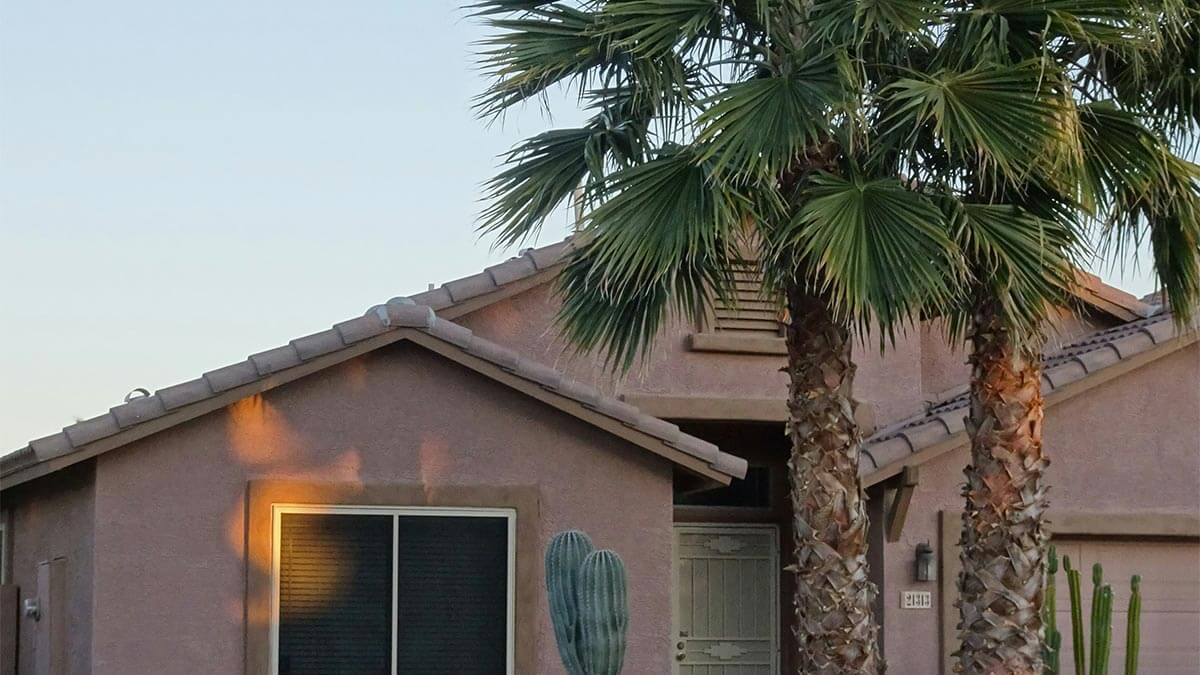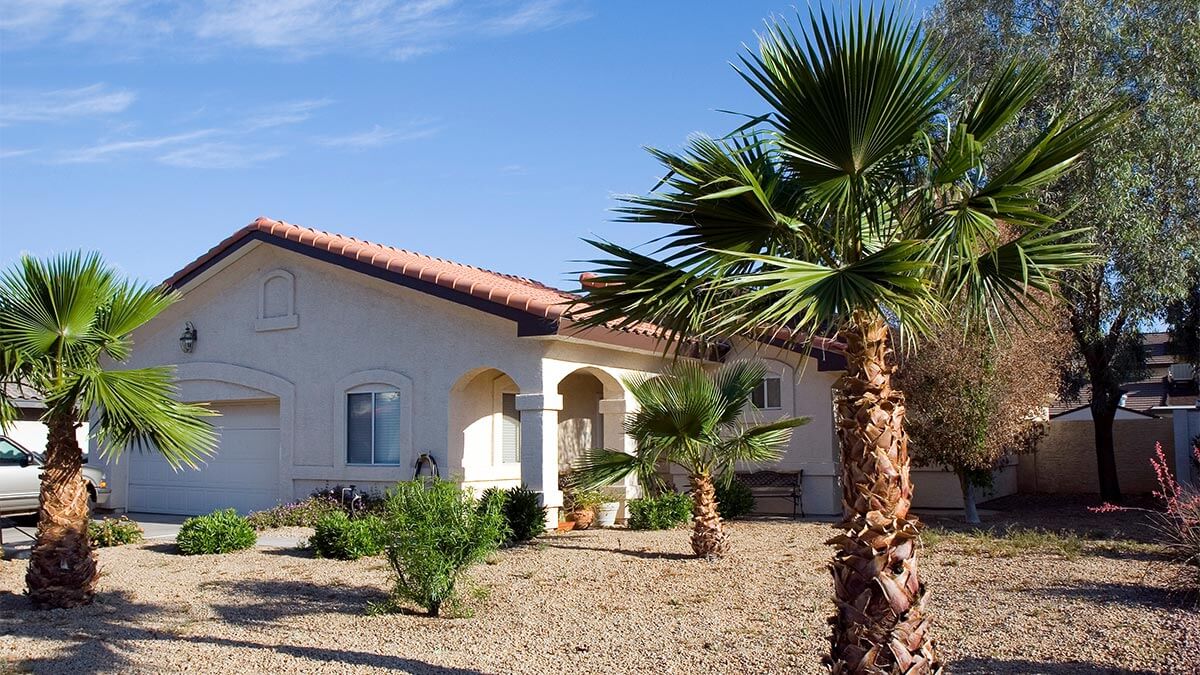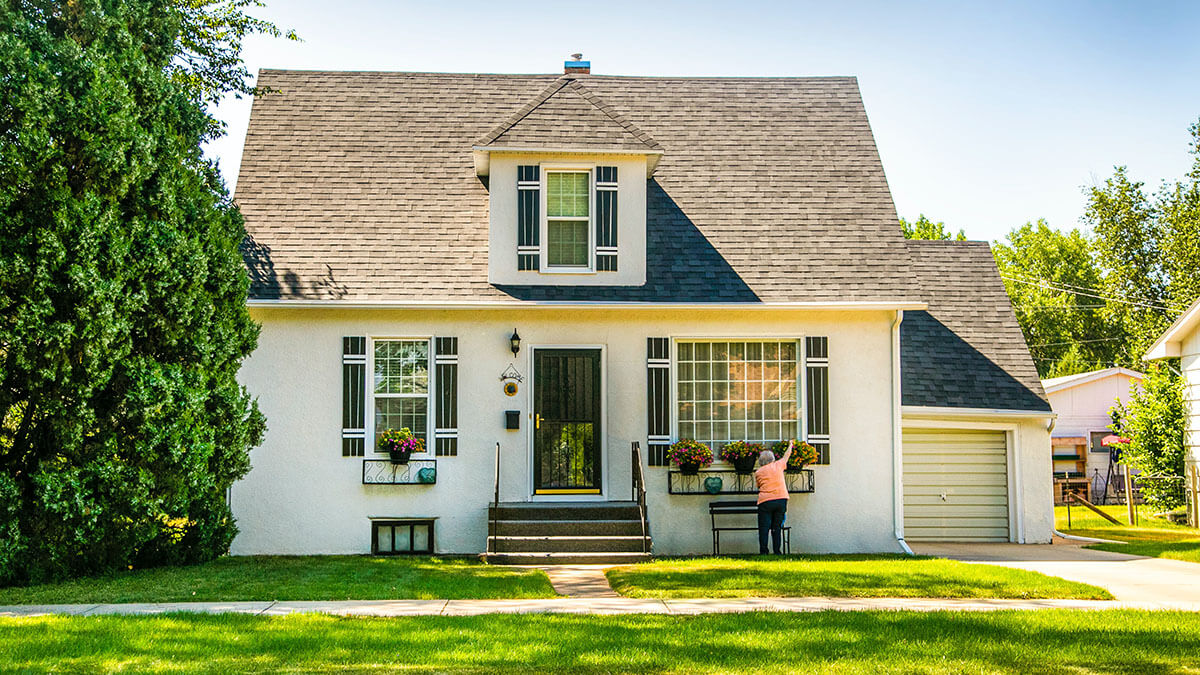Selling a house in Arizona can be challenging, but also rewarding. Getting to skip all the hassle, fees, and extra confusion associated with going through traditional means is a major benefit, as is the extra money you can pull in when you do sell. Regardless of why you need to sell, selling by owner is a great option to make it happen.
In this comprehensive guide, we will walk you through the step-by-step process of selling your home in Arizona. By the end of this guide, you will have all the tools and knowledge you need to successfully sell your house without the help of a real estate agent.
Discover your home’s worth online for free in minutes!
Table of contents
- Overview of FSBO Benefits and Challenges
- Legal Considerations in Arizona for FSBO Sales
- Understanding the Arizona Real Estate Market
- Preparing Your Home for Sale
- Pricing Your Home Correctly
- Listing Your Home
- Marketing Your Home
- Legal Documentation and Disclosures
- Handling Showings and Open Houses
- Negotiating With Buyers
- The Closing Process
- Alternatives to FSBO
- Sell Your Home Your Way Today
Overview of FSBO Benefits and Challenges
Going the FSBO (For Sale By Owner) route when selling a house can offer several advantages. The most significant is the potential to save money since selling by owner allows you to avoid the commission fees that real estate agents usually take from the sale price. This can amount to thousands of dollars, making FSBO an appealing alternative.
In addition to the financial benefits, going the FSBO route also offers a sense of empowerment in controlling the sale of your property. You can set your schedule for showings and directly interact with prospective buyers, which can potentially result in a more personalized and successful negotiation process.
However, taking on this task isn’t without its challenges. Selling a house involves a great deal of legal paperwork and negotiation, which you’ll be responsible for should you choose to go this way. You’ll also have to handle the marketing and advertising of your home yourself, which may include expenses you had not considered.
FSBO can be time-consuming as it requires a lot of work. Researching the local real estate market, understanding real estate laws, pricing the home accurately, marketing, and negotiating are all tasks that you have to undertake on your own. Balancing these responsibilities while managing your daily life is basically a second job.
Legal Considerations in Arizona for FSBO Sales
Selling a property involves various legal procedures that safeguard both the seller and the buyer. Failure to comply with these procedures can lead to legal disputes, monetary loss, or even the nullification of the sale. Therefore, understanding and adhering to the real estate laws of Arizona is a big part of the FSBO process. This not only assures the legality of the sale but also builds trust with your potential buyers, making them more comfortable in moving forward with the purchase.
In the state of Arizona, you’ll be responsible for considering a few different laws and statutes when you intend to sell your home. One of the main legal requirements when selling your home is to prepare a Seller’s Property Disclosure Statement (SPDS). This document highlights any defects or problems with the property that you are aware of. Failing to disclose any known issues can lead to serious legal repercussions.
Arizona law also requires that you provide the buyer with a five-year insurance history of your property. This document will disclose any insurance claims you’ve filed for the property over the past five years, offering the buyer insight into any potential issues that the house may have.
You may wish to consider hiring an experienced real estate attorney to guide you through the process. They can help you with the paperwork and ensure that you comply with all the legal requirements, reducing the risk of future disputes or issues. While it may cut into your profits from selling, it’s cheaper than the fines or worse you might encounter otherwise.
Understanding the Arizona Real Estate Market
Based on data from sites like Redfin, the Arizona real estate market trends towards a seller’s market, which simply means more people are looking to buy homes than there are homes available. Additionally, more people are looking to move to the state than leave it, further increasing demand. This trend can work greatly in your favor, possibly fetching you a higher sale price than expected. However, this also means that buyers might be more selective, scrutinizing properties closely before making a decision.
It’s crucial to monitor the housing market conditions in your specific region within Arizona to avoid over- or underpricing your home. For instance, the markets can vary greatly between urban areas such as Phoenix and Tucson, and rural areas or smaller cities.
The demographics and preferences of the buyers may also differ from place to place, influencing the type of properties that sell best. Timing your sales can also boost your profits, as major events that cause people to move in or out of the state can significantly change the market.
It’s also beneficial to keep an eye on the mortgage interest rates as they can directly impact the purchasing power of your potential buyers. Typically, lower interest rates encourage more buyers to enter the market, increasing the demand for homes.
You should also be aware of the new construction trends in your area. If a substantial number of new homes are being built nearby, it could impact the value and desirability of older homes. Conversely, if new construction is slowing down, existing homes might become more valuable.
The job market and economic condition of Arizona are also important, as these factors can greatly influence the amount of people willing to live in specific areas. More job opportunities and a growing economy can attract more people to relocate, thus driving up the demand for houses.
Current BLS data indicates that Arizona is doing well, with a steady increase in the number of jobs compared to last year. If this trend holds, it’s likely more people will be looking to move to the state, making your home more valuable to buyers.
Preparing Your Home for Sale
The first impression is crucial when selling a house. Therefore, improving your home before you list it is essential. There are several ways to do this, but a general outline goes something like this:
Step 1: Cleaning and Decluttering
No one wants to buy a house that’s filthy and full of junk, so start the process by cleaning things up. Begin by deep cleaning the property. This includes not just the indoors, but also the outside of the house. Pay extra attention to the kitchen and bathrooms, ensuring all surfaces are spotless and free of any clutter. You should also consider pressure washing your home’s exterior, driveway, and sidewalks to give them a fresh, clean look.
Decluttering comes next. Getting rid of trash is a no-brainer, but you’ll also want to start moving out some of your belongings. While your precious family photos and sentimental keepsakes mean a lot to you, potential buyers won’t care for them.
The purpose of touring a house is to imagine what it would be like for you and your family to live there, so a bunch of memories belonging to other people can inhibit that. Try to stick for a neutral look that feels a bit lived in but otherwise open and ready to decorate.
Step 2: Repairs and Improvements
Anything broken in your home needs to be fixed before your sale. Not only can it lower your sales price, but not disclosing these problems (as previously discussed) can put you in hot water. Check for any possible issues such as leaky faucets, non-working light bulbs, cracked windows, and broken appliances. Fix these issues so that potential buyers won’t be deterred by these small but noticeable aspects of your home.
This goes double for any more major issues. When selling a home to a buyer intending to live there, the prospect of a major fixer-upper is a hard sell no matter how great the property might be otherwise. Major repairs will cost money, but this is simply the cost of doing business. It also helps that recent renovations and repairs of this nature tend to make a home more attractive to buyers thanks to the new fixtures and amenities, as well as the assurance that everything is working great.
Lawn maintenance is also a crucial part of preparing or improving your home. Trim shrubs, mow the lawn, and keep the yard tidy to enhance curb appeal. You might even consider adding a fresh layer of mulch or planting some vibrant flowers to catch the buyer’s eye.
Step 3: Inspections
You should have your home inspected professionally before listing it for sale. Though it’s not a legal requirement to do so, inspections are a great investment that can make your home the best it can be. An inspector can spot potential problems like electrical issues, plumbing problems, or roof damage that you’re likely unqualified to diagnose. Addressing these issues early on can prevent disasters from coming up during the negotiation process.
Step 4: Presenting
Make sure you know how best to present your home before listing, and especially before any tours. Professional photography and creating a virtual tour of your house can make it stand out in a crowded Arizona market. High-quality photos highlight the best features of your home and pique the interest of potential buyers.
Pricing Your Home Correctly
The success of your sale largely depends on pricing your home right. An overpriced home can deter potential buyers, while an underpriced one might result in financial loss. Consider getting an appraisal to know the value of your house.
This will involve a professional reviewing the condition of your home, past instances of damage or renovation, and various factors that might have caused it to appreciate or depreciate over time to give you the clearest possible look at what your home is worth.
Factors like the age and condition of your home, the square footage, the number of bedrooms and bathrooms, and recent updates or renovations can all impact its worth.
Additionally, the location of your home is also a major factor in determining its value. Homes located in desirable neighborhoods, near good schools or popular amenities like parks and shopping areas, generally fetch higher prices.
You can also conduct a comparative market analysis by comparing your house with similar properties that were recently sold in your area. By taking a look at the real value of homes like yours, you can better justify the listing price.
Conversely, listing significantly higher than other sold homes will be harder to justify without something to set you apart.
Listing Your Home
Once your house is prepared for sale, you can list it on the MLS (Multiple Listing Service) and other platforms such as Zillow, Craigslist, and Facebook Marketplace. You may also consider hiring a flat-fee MLS service to list your home.
Given that the internet is the first place most people go to find homes for sale, you should be prioritizing online services like these compared to things like print ads or street signs (though these can still be of use if you have the resources).
Before listing your home, make sure you have quality photos and a detailed description ready. The photos should highlight your home’s best features and show each room from multiple angles. If possible, include shots taken at different times of the day to capture the varying natural light.
To write a compelling description, start with a catchy headline that immediately grabs attention. In the body, focus on the unique features of your home, the benefits of the location, and any recent upgrades or improvements. Make sure to point out the elements that make your home stand out, such as a large backyard, an upgraded kitchen, or a finished basement.
Also, try to use keywords in your listing. These are specific words or phrases that buyers might use when searching for a home. For example, if your house has a large backyard, you might use keywords like “spacious backyard” in your listing. Using appropriate keywords can increase the visibility of your listing and attract more potential buyers.
Don’t forget to mention practical information such as the number of bedrooms and bathrooms, square footage, and asking price. Also, provide contact information so interested buyers can easily reach out to you.
Marketing Your Home
Marketing your home is key to attracting potential buyers. After all, if no one knows your home is for sale, how will anyone buy it?
Before you launch your marketing campaign, it’s important to identify your target audience. Who are the most likely buyers for your home? Families searching for their first home, empty nesters looking to downsize, investors looking for rental properties, or someone else? Once you’ve identified your target audience, you can create a marketing strategy tailored to their needs and interests.
Social media is an invaluable tool for reaching out to potential buyers. You can promote your home on platforms like Facebook, Instagram, and Twitter, using quality photos and engaging descriptions taken from your listings. Don’t forget to use relevant hashtags to increase your home’s visibility.
If you have the skills and resources, creating a video tour of your home can be a powerful marketing tool. A video tour allows potential buyers to get a feel for the layout and flow of the home, which can be very persuasive. It also helps to set expectations before an in-person tour.
Use local community bulletin boards, both online and offline, to advertise your property. This can be a great way to reach potential buyers who already live in the area and might be interested in purchasing your home. It’s also a good idea to reach out to your network.
Let your friends, family, and colleagues know you’re selling your home. They might know someone who’s in the market for a new place to live, and your property might just be what they’re looking for.
Legal Documentation and Disclosures
When you’re preparing to sell a house, you’ll be required to present several legal documents for the buyer to sign or receive. Apart from the Seller’s Property Disclosure Statement and a five-year insurance history, you must also provide a title report and lead-based paint disclosures for houses built before 1978. They’re an essential part of being transparent about the condition and history of your property. They provide the prospective buyer with a clear picture of what they’re stepping into, thereby reducing the risk of misunderstandings or accusations of misinformation down the road.
As touched on before, it’s highly recommended to work with a legal professional in preparing these reports and disclosures. This will ensure that you’re providing a thorough and accurate account of your property and that you’re in full compliance with Arizona state laws.
While it might seem like a tedious process, these steps can help protect you legally and could even make your property more attractive to buyers who appreciate complete transparency. It’s essential to keep these documents handy from the very first stage of the selling process, as interested buyers might request to see them. Being prompt and organized with your paperwork can also provide an impression of a well-maintained property.
Handling Showings and Open Houses
Make sure to consider the potential buyer’s perspective when you start planning your showings and open house events. Your goal is to create a space that appeals to a broad range of tastes and lifestyles. Make sure all rooms are well-lit, as brightness tends to make spaces appear larger and more inviting. Open curtains and blinds for natural light and turn on all interior lights.
Before each showing or open house, do a quick run-through of your house to ensure everything is in its place. This includes making the beds, wiping down surfaces, and removing any personal items, such as mail or pet accessories. Keep some basic cleaning tools on hand for this to save time.
Creating a welcoming atmosphere can significantly impact a potential buyer’s perception of your home. Consider adding fresh flowers or lighting a scented candle to inject warmth into the space. Additionally, you may want to play soft, instrumental music in the background during open houses to set a relaxed and pleasant ambiance.
On the practical side, ensure that you have informational brochures or flyers on hand detailing key features of the home, recent upgrades, or noteworthy aspects of the neighborhood or local community. This information can serve as a valuable takeaway for potential buyers to review after the showing.
Remember, the main objective of a showing or open house is to allow potential buyers to envision themselves living in your home. Creating a positive and memorable experience can help make your property stand out in a competitive market.
Negotiating With Buyers
Negotiations are a big part of the home-selling process. Knowing how to negotiate effectively can result in a higher selling price. Since you don’t have the assistance of a realtor, you’ll need to become an expert in negotiating on your own.
Be prepared for back-and-forth discussions regarding price, terms, and contingencies. Set a hard limit for how low you’ll take the price to give you perspective on when to cut things loose, as well as your margin for negotiation. You can also try offering things like appliances to sweeten the deal without lowering your overall price.
The Closing Process
Once you have accepted an offer, the closing process begins. In Arizona, this includes an inspection period, appraisal, termite inspection, and loan underwriting. If everything is on the up and up, you’ll be handing over the appropriate ownership documents for the buyer to officially take possession of the property. Be prepared for closing costs such as title insurance, escrow fees, and transfer taxes, as well as a good amount of time for everything to finish up.
Alternatives to FSBO
While selling a house by owner is doable, consider hiring a real estate attorney or a flat-fee MLS service if the process becomes too overwhelming. These services can guide you through the process, ensuring you comply with all legal requirements. You can also try an iBuyer service that will buy your home for you.
Sell Your Home Your Way Today
Selling a house by owner in Arizona might seem challenging, but with the right information and planning, it can be highly rewarding. This guide provides an overview of the process, from understanding the Arizona real estate market to closing the sale. With determination and a well-considered strategy, you can successfully navigate this process and sell your home on your own for the best price possible.




